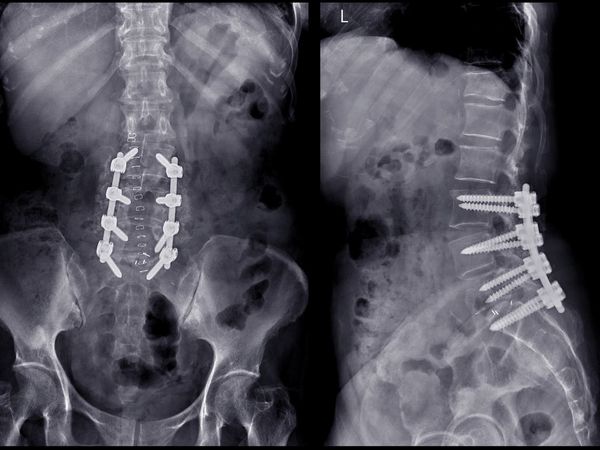 |
| 3D Illustration concept of spinal cord |
Approximately 5.6 million people of the world population have difficulty or inability to move one or more upper or lower extremities, while more than 1.2 million people have a spinal cord injury some of which can lead long-term paralysis. In the case of spinal cord injuries, two forms of a paralysis are most common: Tetraplegia, also known as quadriplegia, involves the complete loss of movement in the torso, limbs, feet, and hands. Whereas in Paraplegia, body is paralysis below the waist, including both legs. It may interfere with excretory and sexual functioning, in addition to eliminating the ability to walk.
Now the people suffering from long-term paralysis may soon be
able to walk again, as scientists from Sagol Center for Regenerative
Biotechnology at Tel Aviv University have given new hopes to them, after
they created the first-ever 3D human spinal cord tissue implant.
In this latest achievement Israeli researchers found
that mimicking embryonic development by applying a specific spinal
cord motor neuron differentiation protocol in a 3D dynamic environment may help
in healing the injured area. The technology is based on taking a small biopsy
of belly fat tissue from the patient.
The researchers used genetic engineering to reprogramme the
cells and return them to a state that resembles embryonic stem cells, the cells
capable of becoming any type of cell in the body.
Preparations are underway for the revolutionary implants to
undergo clinical trials in humans, tissue samples from patients are transformed
into functioning spinal cord implants through a process that mimics the
development of the spinal cord in human embryos.
 |
As per researchers, the breakthrough implants returned a success rate of 80% in a lab test on paralyzed mice. This means 8 out of 10 mice were able to overcome the limitations in mobility induced by their paralysis.
Researchers implanted the spinal cord into two groups of mice:
an 'acute' group which had only recently been paralyzed, and a 'chronic' group
that had been paralyzed for a long time, equivalent to a year in human terms.
They discovered that 100 per cent of the mice with acute
paralysis and 80 per cent of those with chronic paralysis regained their
ability to walk.
The study was led by Professor Tal Dvir’s research team at the
Sagol Centre for Regenerative Biotechnology, the Shmunis School of Biomedicine
and Cancer Research, and the Department of Biomedical Engineering at Tel Aviv
University.
Professor Dvir told to Bloomberg: “This is the first instance in
the world in which implanted engineered human tissues have generated recovery
in an animal model for long-term chronic paralysis – which is the most relevant
model for paralysis treatments in humans,” “The model animals underwent a rapid
rehabilitation process, at the end of which they could walk quite well.
“There are millions of people around the world who are
paralyzed due to spinal injury, and there is still no effective treatment for
their condition.
“Individuals injured at a very young age are destined to sit in
a wheelchair for the rest of their lives, bearing all the social, financial,
and health-related costs of paralysis.
“Our goal is to produce personalized spinal cord implants for every paralyzed person, enabling regeneration of the damaged tissue with no risk of rejection.”
 |
| Petri dish with tissue samples |
Prof. Dvir, head of Sagol Center for Regenerative Biotechnology,
concluded, "We hope to reach the stage of clinical trials in humans within
the next few years, and ultimately get these patients back on their feet. The
company's preclinical program has already been discussed with the FDA. Since we
are proposing an advanced technology in regenerative medicine, and since at
present there is no alternative for paralyzed patients, we have good reason to
expect relatively rapid approval of our technology."
The results of peer-reviewed research published in the journal Advanced Science.
 |
| Prof. Tal Dvir (courtesy of Tel Aviv University) |
The revolutionary organ engineering technology developed at Prof. Dvir's lab, he teamed up with industry partners to establish Matricelf (matricelf.com) in 2019. The company applies Prof. Dvir's approach in the aims of making spinal cord implant treatments commercially available for persons suffering from paralysis.
The team at Prof. Dvir's lab included PhD student Lior Wertheim, Dr Reuven Edri, and Dr Yona Goldshmit. Other contributors included Prof. Irit Gat-Viks from the Shmunis School of Biomedicine and Cancer Research, Prof. Yaniv Assaf from the Sagol School of Neuroscience, and Dr Angela Ruban from the Steyer School of Health Professions, all at Tel Aviv University all believes that the new method has relevance beyond spinal injury, and are now exploring using it for a range of other diseases and injuries, such as Parkinson’s disease, brain trauma, myocardial infarction, and age-related macular degeneration.
 |
Some wheelchair users could be able to walk again 'within a few years', scientists claim, after 3D spinal cords were successfully implanted in paralyzed mice. Experts at Tel Aviv University said spinal cord implants could be made by reprogramming fat cells from humans (shown)
Now the researchers have started preparing for the next stage of
the study: clinical trials in human patients. They hoped that within a few
years the engineered tissues will be implanted in paralyzed individuals
enabling them to stand up and walk again.
“We’ve been using
human implants on mice, not mice implants, which means we’re not going back to
the beginning of research to move over to humans. Rather, we know how to
prepare the implants for humans, which is what makes us optimistic we will move
quickly to clinical trials,” Prof Dvir told The Times of Israel.









0 Comments